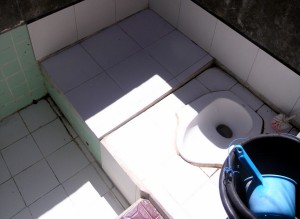What an incredible place. Myanmar is right at the junction of Bangladesh, India and South East Asia and it shows this geographical uniqueness in its food, culture and people. I visited there in mid-March for three and a half weeks despite some people deeming travel to this country counter-productive and asserting that it was tantamount to handing foreign money directly to the military junta. Perhaps so. But also perhaps not.

The Junta
The Military Government in Burma control the state in a much more subtle way than I was expecting before arriving in the country. There are few uniformed military personnel patrolling the streets, few uniformed police, very little visible Government presence at all. In fact, if you visited the country without a suspicious eye, you could be fooled into thinking that everything is just fine. And for the most part, it is. People have jobs, they work their farms, the markets operate well, most people are well-fed. But dig beneath the surface and an amazing level of subtle control exists. Informants and spies are apparently everywhere – but you wouldn’t know for sure forcing the populace to be on edge and paranoid. Everyone fears that everyone else is an informant, so no one is game to organise opposition, agitate or even just chat about events.
There are checkpoints throughout the country where the military check citizens’ ID cards. They don’t record anything – they just check. Seemingly there is no other reason than to let the populace know that they are not free to go about their business without big brother watching.
There are sometimes random searches of buses – plain-clothed men rifling through passengers’ luggage whilst timid citizens search for their ID cards hoping they won’t be spoken to. On a bus I caught, they simply rooted around in a few bits of luggage for 5 minutes in the middle of the night and then left the bus. Everyone on the bus sat to attention and were visibly uneasy.

The Revolting Burmese
Despite the paranoia of the populace, I felt they were desperate to share their stories with foreigners – this is in stark contrast to what the Lonely Planet guidebook had advised to be the case. I had gone to the country prepared for no discussion about the Government, but arrived shocked that so many people expressed their absolute discontent with the authorities. I sincerely felt that below the surface of a happy people there lurked the rumblings of revolution. In this regard, it is unsurprising that the monks rose up in 2007 and it would be unsurprising if a bigger proportion of the populace revolted in the next few years.
Is the Junta Propped Up?
One of the recurring themes whilst travelling through Burma was that Government officials only benefited to the extent that they do by selling the country’s resources to foreign nations. The main concern from citizens is over electricity (Burma is in blackout most of the time), mineral resources (oil, gas and gems) and wood. The accusations are that the major buyers of these resources is China and India. These two countries together make up over 30% of the world’s population and no other country is going to stand up to them in order to help the Burmese people. So the people themselves are going to be forced to take matters into their own hands – and this necessarily means much blood. Further, it means that China and India will have blood on their hands.
So there’s a brief and simplistic tourist view of how things are unfolding in Burma. The Junta will not give up power whilst they are allowed to rape the country of its wealth and the populace will be forced into violent revolution. A sorry state of affairs for the lovely Burmese people.












